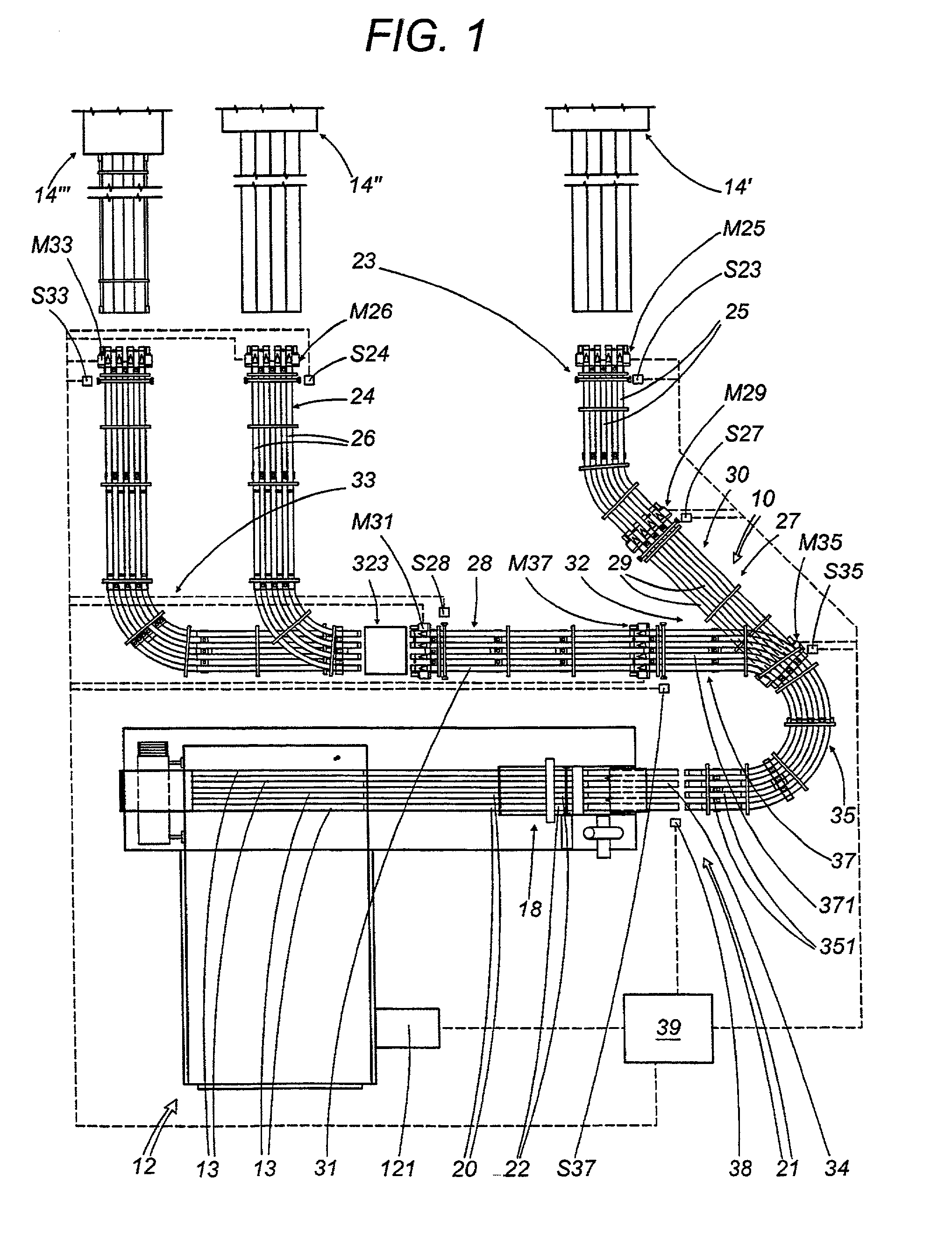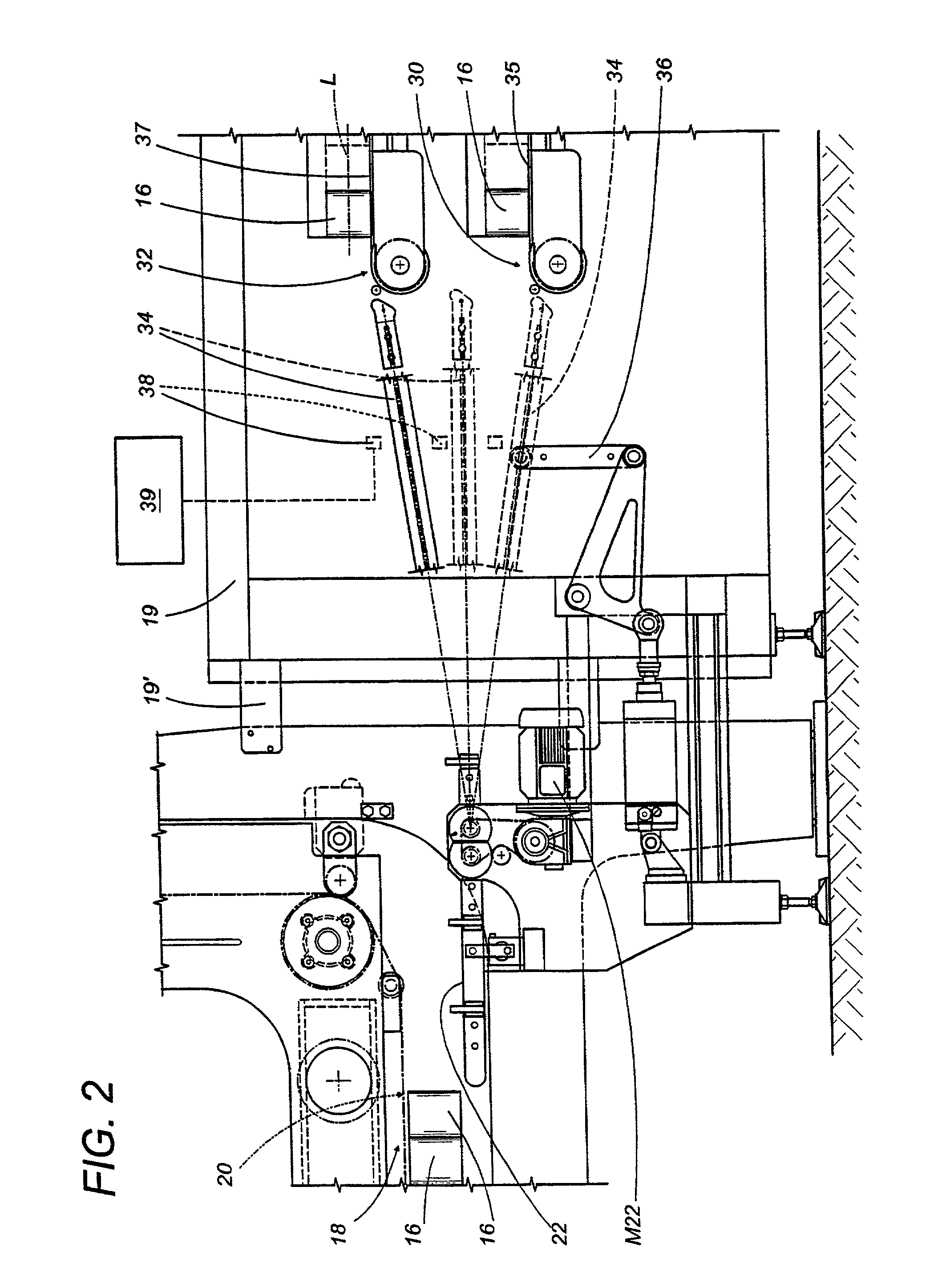Apparatus and method for conveying items
a technology of items and conveyor belts, applied in the direction of transportation and packaging, packaging, packaging goods, etc., can solve the problems of consumption and wear, damage, consumption and wear of items, conveyor belts that transport items and related guides, etc., to reduce the consumption of motive power and simplify the present apparatus. the effect of the structure and functional simplification
- Summary
- Abstract
- Description
- Claims
- Application Information
AI Technical Summary
Benefits of technology
Problems solved by technology
Method used
Image
Examples
embodiment 10
[0035] FIG. 1 shows a system using the first preferred embodiment 10 of conveying apparatus of the present invention. The system comprises a machine 12 for working said items situated upstream, which provides said products or items--in the form of rolls of paper, plastic or similar material obtained starting from respective elongated bodies, or sticks (indicated in FIG. 1 with the numeric reference 13)--by means of equidistant transverse cuts in said stick 13 and, downstream of this machine, a plurality, in particular three machines for treating said items indicated respectively with the numeric references 14', 14" and 14'", in particular in the form of machines for packaging said items which receive said items in a substantially already grouped condition and package them in a respective container, generally constituted by a wrapping film made of plastic material.
[0036] As shown particularly in FIG. 2, said rolls with substantially cylindrical shape thus present a respective longitu...
first embodiment
[0071] In accordance with FIGS. 5 through 7 of the accompanying drawings, it can be observed that the apparatus for conveying items designated with the reference P in these figures, comprises a line for transporting said items which can be similar to that of the first embodiment, whereof only the initial part designated with the numeric reference 15' is shown in the figures. The line is able to transport said items P from a machine 12 for working said items situated upstream, where a series of rolls made of paper material are provided starting from sticks or reels of larger dimensions, to a series of packaging machines positioned downstream, which are not expressly shown in the accompanying figures.
[0072] In practice, said working machine 12 situated upstream advances and cuts simultaneously one or more reels of paper material, to obtain therefrom a series of individual rolls of paper material, destined prevalently to household use, which are advanced at a predefined speed, exemplif...
PUM
 Login to View More
Login to View More Abstract
Description
Claims
Application Information
 Login to View More
Login to View More - R&D
- Intellectual Property
- Life Sciences
- Materials
- Tech Scout
- Unparalleled Data Quality
- Higher Quality Content
- 60% Fewer Hallucinations
Browse by: Latest US Patents, China's latest patents, Technical Efficacy Thesaurus, Application Domain, Technology Topic, Popular Technical Reports.
© 2025 PatSnap. All rights reserved.Legal|Privacy policy|Modern Slavery Act Transparency Statement|Sitemap|About US| Contact US: help@patsnap.com



